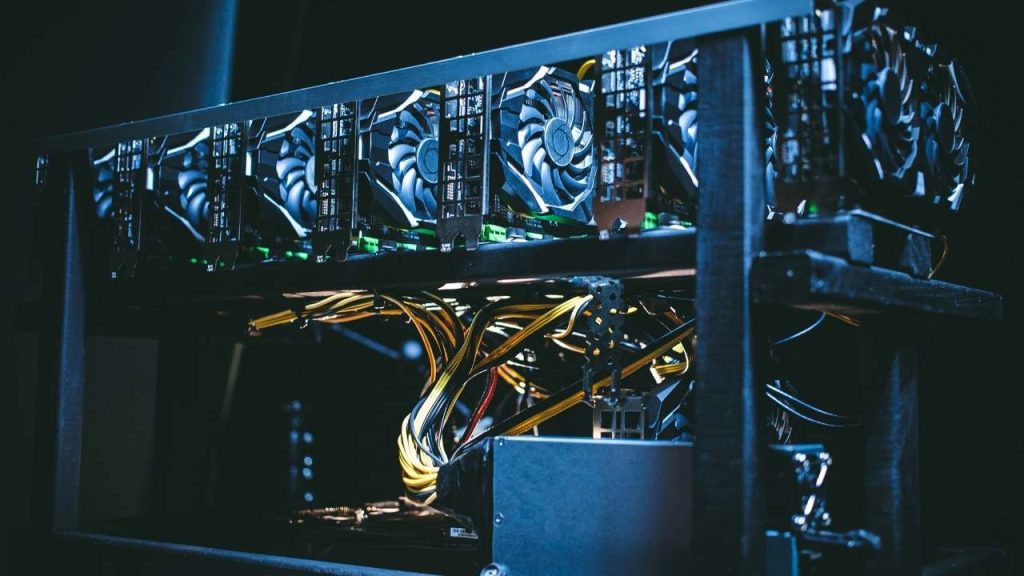What Is Bitcoin Mining?
Mining bitcoin is the method by the fresh bitcoins are put into circulation. It is also the method by which new transactions are verified by the network. It is crucial to the maintenance and growth for the ledger blockchain. “Mining” is performed using advanced hardware that solves an extremely difficult computational maths problem. The first computer to discover the solution gets an additional bitcoin block of bitcoins. The process continues.
Bitcoin mining is arduous expensive and costly and is only occasionally rewarding. But, mining does have attracted the attention of many investors who are interested in cryptocurrency due to it being a fact that miner get paid for their efforts with cryptocurrency tokens. It could be that people who are entrepreneurial believe that mining is a way to earn coins from heaven, just like California gold prospectors of 1849. If you’re technically inclined, why not try it?
The Bitcoin reward that miners earn is a motivational factor that encourages individuals to contribute to the main purpose of mining: to legitimate and oversee Bitcoin transactions, assuring their legitimacy. Since these responsibilities are distributed between a variety of users across the globe, Bitcoin is a “decentralized” cryptocurrency, which means one that does not depend in any central entity such as an institution like a central bank or government to regulate its operations.
But, before investing your time and resources go through this guide to determine if mining is for you.
Key Takeaways
- Through mining, you will earn cryptocurrency, without having to pay for it.
- Bitcoin miners earn Bitcoin as rewards for complete “blocks” of verified transactions that are then included in the Blockchain.
- Mining rewards are given to the person who finds an answer to a complicated hashing problem first. the chance that a participant is the one to solve the puzzle is tied to the proportion of the total mining power available on the network.
- You require either an GPU (graphics processing device) or an application-specific circuit (ASIC) to setup an mining rig.
Why Bitcoin Needs Miners
Blockchain “mining” is a metaphor for the computation that the nodes of the network do, in the hope of making new tokens. In actuality, miners are earning money for their work as auditors. They’re in charge in confirming the authenticity and legitimacy of Bitcoin transactions. This procedure is designed to ensure that Bitcoin users honest, and was created by Bitcoin’s creator, Satoshi Nakamoto. 1 By the process of verifying transactions, miners can help to stop from the ” double-spending problem.”
Double spending is the scenario that occurs when the Bitcoin owner is able to spend on the exact same Bitcoin twice. In the case of tangible currency this shouldn’t be an issue. If you’ve handed an individual a $20 bill to purchase a bottle of vodka, you won’t possess it, therefore there’s no risk that you’ll make use of that exact $20 to purchase lotto tickets the next door. Although there is the chance that counterfeit cash is made however it’s not like spending the same money twice. However, with digital currency according to the Investopedia dictionary states, “there is a risk that the holder could make a copy of the digital token and send it to a merchant or another party while retaining the original.”
Let’s suppose you have one authentic $20 note and a counterfeit version of the same amount. If you attempted to use both the genuine bill as well as the counterfeit anyone who took the time to look at both bills serial numbers would discover that they had identical, so one was likely to be fake. The process a blockchain miner performs is similar to checking transactions to ensure that the users haven’t attempted to use the identical bitcoin twice. It’s not a perfect analogy, but we’ll go into more detail in the following.
One megabyte of transaction data could be accommodated in one bitcoin block. The limit of 1 megabyte was established by Satoshi Nakamoto. This has been a subject of debate as miners believe that the block size should be increased in order to accommodate more data. This could make it possible for the bitcoin network can process and verify transactions faster.
Types of Mining
There are different types of mining. Some methods are more efficient than others, and some have negative environmental effects. Learn more about the different kinds of mining. There are different methods of extraction, so learning about the differences between them will help you make the right choice. Let’s look at a few of the most popular methods. The first is surface mining, which involves removing unwanted earth from a site. Some of the equipment used in surface mining is the bucket wheel excavator. These machines can move up to 12,000 cubic meters of earth per hour.
Cloud mining
Cloud mining is another type of mining. A cloud mining company makes use of remote datacenters to store and operate mining rigs. Instead of having to maintain and operate the equipment, the company purchases and stores it. Users can then pay the organization to use the computing power. This method involves a monthly fee for the hardware and electricity. This fee may vary depending on the country. There are also some risks associated with cloud mining, like being cheated by unscrupulous companies.
Dedicated mining machines
Dedicated mining machines can be costly and require high processing capacity. The second type is cloud mining, which uses a virtual private server to mine. The latter requires high processing capacity, but is more convenient for most people. It is best for people with limited technical skills and low budgets. These methods will usually give less profit than dedicated machines, but it will work if you have the right hardware. In general, cloud mining will give you the best results.
Advantages
There are many advantages to both types of mining. The benefits of hardware mining are that you have to invest in hardware and have the satisfaction of achieving something worthwhile. The disadvantages of cloud mining are that you will have to incur operating costs as well as electricity fees. However, there are some risks associated with cloud mining. You should do a thorough research before making the decision. You should also remember that there are many scams online, so be cautious and pick a legitimate company.
Differences between the two types of mining
The main differences between the two types of mining are in power consumption and cost. The power consumption of GPU mining is lower than that of ASIC mining. As a result, this form is more expensive than ASIC mining. Nevertheless, the cost of a pre-built GPU mining rig is still reasonable. It can cost you up to $3,000 and is capable of producing cryptocurrencies worth about $2500. These are not cheap, but they’re worth the investment.
The primary difference between the two types of mining is their cost. Some methods, such as sand and gravel mining, are more expensive than others. These methods require specialized equipment and are more costly. For the most part, however, they are similar in that they all involve bringing resources to the surface. In addition, they differ in their process and technique of extraction. Some mining methods can use a variety of mining techniques. If the process involves using a GPU, it’s called “gpu mining”.
Various types of mining
There are various types of mining. The main difference between solo mining and pool mining is the level of difficulty. While mining pools involve a team of miners and share the rewards, solo miners compete with each other. In addition, solo mining is much more profitable. This is because, depending on the hash rate, a single miner can achieve a higher level of profitability than a group. There are many options in between, but these two methods are the most popular.
The most common types of mining are GPU mining and CPU mining. Then, there is solo mining, which uses personal equipment and cryptocurrency mining software. Individual miners do not join a pool and retain their digital coins. They only earn rewards when other miners are faster than them. This method also requires a lot of capital. If you are a beginner, solo mining is not the best option. The rewards from this type of mining are lower, but it is possible to earn more than a pool of people.
In contrast, pool mining is more profitable than solo mining. Pool mining is the more efficient way to earn, but it’s also risky. It requires more capital and equipment than solo mining. So, it’s a good idea to consider whether you need a pool or a solo mine. And if it is, which type of mining is better for you? If you’re a beginner, you might want to invest in a server with more computers.
 Skip to content
Skip to content












